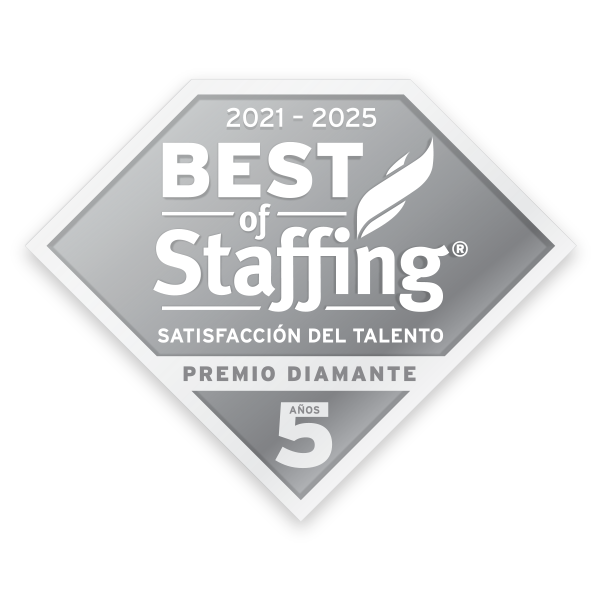
Digital accessibility (a11y) is not what you might think. It isn’t strictly a social mission. It’s rarely a simple task. And it doesn’t happen overnight. No matter how far your organization has come, there’s often more work to be done. It is a business imperative, a complex undertaking, and an endless journey, requiring constant advocacy to keep moving forward and never back.
As long-time advocates know all too well, gaining executive support isn’t just a challenge during the initial stages of a11y programs. Once you establish awareness, you’ll need to foster and steward your company’s commitment to inclusion. Continuous leadership buy-in is critical to maturing your capabilities, optimizing your practices, and sustaining your success.
At the IAAP’s recent virtual networking event, our Digital Accessibility Practice Leader, Kate O’Connor, spoke about how to secure support at every phase of the a11y journey. After her presentation, participants shared their experiences, challenges, and advice with one another. Here are a few of the many digital accessibility advocacy tips explored:
- Balance data with emotion.
- Find allies and form alliances.
- Tailor your message to your audience.
- Speak in terms anyone can understand.
- Connect accessibility goals to core values.
- Create an action plan before every ask.
- Aim for progress, not perfection.
1. Balance data with emotion.
O’Connor opened the discussion with impactful facts about the value of digital accessibility, prompting a flurry of messages in the event chat. “People with disabilities are the world’s largest minority, and it’s one that any person can join at any time,” one IAAP member reminded the group.
Diving into insights from Onward Search’s free guide, Making the Case for Digital Accessibility, O’Connor continued by exploring the moral, business, product and legal cases for a11y. To paraphrase her words, there are many compelling arguments that advocates can make, and measurable data is the foundation of every single one. However, humanizing the research is as critical as presenting it.
Don’t just explain that 1 in 4 Americans have disabilities; explain what it’s like to be the 1 in 4. O’Connor shared the story of a business leader who thought none of their employees had disabilities until a survey proved otherwise. After coming forward, a neurodivergent employee became an accessibility tester for the company. The experience brought tears to their eyes. Like that employee, 3.5 million Americans are expected to need assistive technology by 2050.
2. Find allies and form alliances.
You can’t win as “a team of one,” O’Connor proclaimed. Building a coalition of allies can help you amplify your message, gain diverse perspectives, and lighten your workload. So, consider who within your organization will see the value in a11y efforts.
To be an effective advocate, you need to know your partners from your detractors. Select departments may be slower to advocate alongside you, and every company is different. However, groups such as Information Technology (IT), Product, Marketing, Legal, and Human Resources (HR) all have a stake in digital accessibility and good reasons to support the cause. Each of these teams can also contribute unique insights and assistance.
However, informal alliances can quickly dissolve, and keeping allies engaged isn’t always easy. For these reasons, O’Connor emphasized the value of formalizing partnerships by building an official digital accessibility committee to promote and steer a11y efforts. Creating a regular meeting cadence, shared resources, and designated responsibilities pushes initiatives forward.
3. Tailor your message to your audience.
“Be ready for questions, objections and misconceptions,” O’Connor warned. Understanding your audience is critical to inspiring their action. Whether you’re preparing a proposal for a potential ally or decision-maker, find out all you can about them ahead of time.
Ask yourself: What message would they be most likely to respond to? Do they prefer PowerPoint presentations, interactive conversations, or a different form of communication? How could digital accessibility help them meet their goals? Could such efforts conflict with their current priorities in any way?
A business leader may resonate more with the potential for increased market reach and revenue growth, while a legal team might be more concerned with compliance and risk mitigation. As different stakeholders have different interests and concerns, tailoring your message can make it more persuasive, increasing your chances of gaining support.
4. Speak in terms anyone can understand.
Few business leaders fully understand best a11y practices. So, if you tell an unfamiliar decision maker, “Our website needs improvements in color contrast, keyboard navigation, and form labels,” your concerns may fall upon deaf ears.
Picture instead, you say, “Imagine trying to see a dark screen in the glare of the bright sunlight, navigate your computer without a mouse pad, or fill out a form when the labels and fields don’t match up. That’s how people experience our website all the time.” Every stakeholder is different, but simple words and examples like this can often help.
Avoid technical jargon and complex terminology that might alienate your audience. Instead, use plain or common language to ensure the value of digital accessibility is understood by all, regardless of their familiarity with the concept. This inclusivity in communication mirrors the very principles of a11y, reinforcing your message’s integrity.
5. Connect accessibility goals to core values.
Align your goals with those of your company, and explain the alignment. Connecting your digital accessibility efforts to your organization’s mission, vision, or values can significantly strengthen your case.
For example, Microsoft’s mission is to empower “every person and every organization on the planet to achieve more.” If you were making the case for digital accessibility efforts within Microsoft, you might explain how diversity, equity, and inclusion are ingrained within the company’s brand identity. Excluding people with disabilities would conflict with the brand’s mission statement and core beliefs.
If you can effectively demonstrate how a11y supports a company’s stated aims, it should resonate with any leader within your organization. By doing so, you’ll position the cause as integral to an existing strategy and make it harder for stakeholders to dismiss the importance.
6. Create an action plan before every ask.
Like most challenges in life, preparation is critical to digital accessibility advocacy. According to O’Connor, advocates should do their best to form a clear, detailed a11y action plan outlining your next steps, needed resources, and expected outcomes – before ever approaching decision-makers.
Vague requests are less likely to be approved. After explaining why a11y matters, you should articulate everything you can about what you’re asking for and how you’ll implement it. In addition, you should be ready with evidence and examples of proven case studies that support your claims.
Show how similar action plans have succeeded for others and alternative approaches have not. For instance, organizations such as CVS Health expanded their market reach and increased brand equity by building leading a11y programs. In contrast, companies like Target lost over $6 million in damages and $3.7 million in legal fees in a digital accessibility lawsuit.
7. Aim for progress, not perfection.
“Remediating 8,000 websites [at once] is not going to happen. Start with the most trafficked pages,” O’Connor advised. Don’t overreach or overcommit at any point along your accessibility journey. Ironically, pursuing too much too quickly can cause your company to achieve less. Often, aiming for perfection results in rejected proposals or unfulfilled promises.
Instead, research what’s reasonable, and strive for consistent progress. Make realistic requests, set achievable goals and celebrate every success, no matter how small. It’s better to focus on steady improvements than to get bogged down by the pursuit of unattainable ideals. Digital accessibility advocacy demands patience and persistence.
At the end of the recent IAAP networking event, multiple participants described leading iterative changes over several years before achieving the impact they first envisioned. Still hopeful and proud, these leaders continue to mature their organizations and elevate digital experiences for all. As you do the same, remember that every step forward is a step toward a more inclusive digital world. Keep advocating, keep advancing, and keep in mind that each difference and every person matters.
 Download Our Advocacy Guide
Download Our Advocacy Guide
This free resource explores the facts and figures that prove digital accessibility is a moral, financial and legal imperative. Learn all you can to secure more a11y support.
Connect With Certified Experts
Our IAAP-certified team and network help companies audit digital experiences, remediate accessibility defects, and scale a11y programs.










